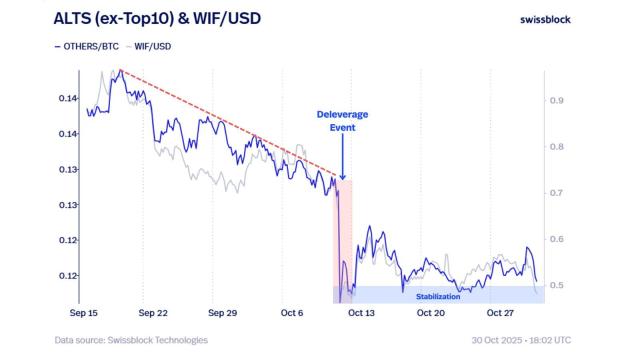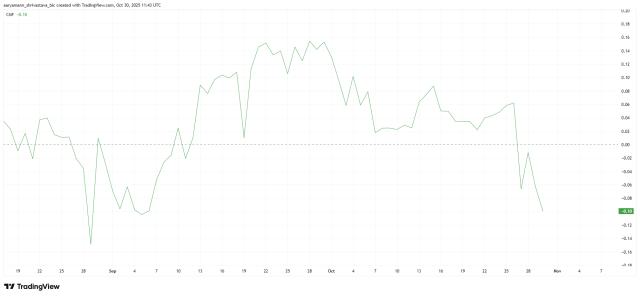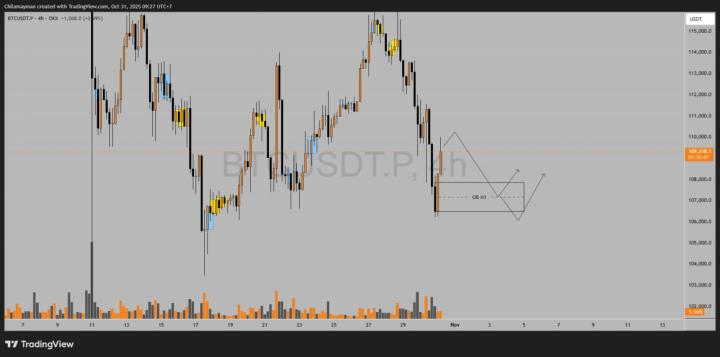As the port lights of Busan, South Korea , came on, US President Donald Trump and Chinese President Xi Jinping presented a one-year "trade truce" agreement on October 30, 2025. Trump called the talks "fantastic," and the market briefly cheered. However, the plunge in cryptocurrencies in mid-October already revealed another message: behind the surface peace, geopolitical rifts continue to widen.
A year of respite has failed to resolve deep-seated differences.
The agreement appears to be a win-win situation: the US lowers tariffs related to fentanyl and extends the current tariff suspension, while China resumes purchasing US soybeans and guarantees rare earth supplies. The US also temporarily suspends adding more Chinese companies to its blacklist. However, according to Bloomberg , both sides only hope to stabilize relations first; the fundamental contradictions remain unresolved. Former US Trade Representative Robert Lighthizer bluntly stated:
"This agreement probably won't last a year; structural problems will soon resurface."
For both leaders, a ceasefire is a tactic to buy time. Trump can deliver results to farmers and manufacturing voters before the election; Xi Jinping, on the other hand, uses the stance of "maintaining the stability of Sino-US relations" to prevent further withdrawal of foreign capital. Therefore, the truce is more like a pause button than an end button.
Dangerous bargaining chip in the Trump-Xi meeting: nuclear test
On the eve of the Trump-Xi meeting, Trump suddenly announced yesterday that he had instructed the U.S. Department of Defense to resume nuclear weapons testing due to other countries conducting nuclear tests. Recently, Russia successfully tested a nuclear-powered underwater drone capable of carrying a nuclear warhead. Although Russia denied conducting a nuclear test, it stated that if the U.S. resumes testing, Russia might do the same. In response, China called on the U.S. to abide by its commitments under the Comprehensive Nuclear-Test-Ban Treaty (CTBT).
Although Trump did not explicitly name which countries conducted the nuclear tests, his subsequent posts mentioned Russia and China, and named the United States as having the world's largest nuclear arsenal, followed by Russia and China as the third largest, but claiming that China would catch up within five years. This challenge to the West's strength on the eve of the Trump-Xi meeting was highly significant. Therefore, the outside world believes that starting with a dangerous beginning and ending with a peaceful and agreed-upon Trump-Xi meeting, while seemingly a good outcome, actually harbors turbulent undercurrents and sows huge uncertainties in geopolitics.
Power balance under rare earth bargaining chips
During the truce, China's rare earth advantage became a key lever. The US's temporary halt to expanding export restrictions was interpreted as a compromise with the risk of a "rare earth supply disruption." Scott Kennedy, an analyst at the Center for Strategic and International Studies (CSIS), pointed out that China's move "gained a safer buffer for its own economic and technological upgrades." Data shows that the average US tariff rate dropped from 57% to 47%, which, although still relatively high, is sufficient to allow China's manufacturing supply chain to maintain price competitiveness.
Meanwhile, both sides are accelerating their "strategic decoupling": Trump's Asia trip extended invitations to Japan and South Korea to invest in shipbuilding and rare earth substitute industries, while China's next five-year plan focuses on high-end chips and domestically produced software. Stephen Jen, chief economist at Eurizon SLJ Capital, assesses:
"The two countries are going their separate ways and are working hard to build their own independent economic ecosystems."
Geopolitical risks trigger Bitcoin crash
The most direct financial reflection of the rift appeared three weeks before the Trump-Xi meeting. On October 10, Trump announced a 100% tariff on all Chinese imports and imposed a new round of software export controls. Panic quickly spread to the 24-hour cryptocurrency market, with Bitcoin (BTC) prices hitting a low of $107,000 within 24 hours. GLASSNODE technical analysis indicated that Bitcoin could fall to $88,000, showing that the Fed's high interest rates and the risk of trade conflict continue to suppress investor sentiment.
The Busan Agreement provides a one-year buffer for the global supply chain, but core issues such as rare earths, advanced chips, and cybersecurity remain unresolved, reigniting the long-dormant Cold War nuclear arms race. The reallocation of funds stemming from geopolitical confrontation has already been foreshadowed in crypto assets and may reappear in other highly leveraged assets. The peace investors see may merely be the calm before the storm.







